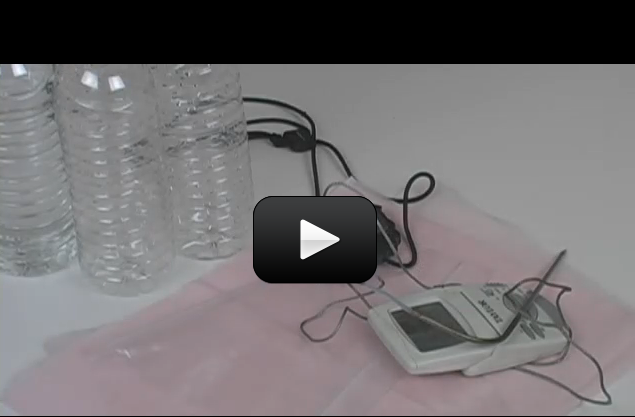Scientists do experiments here on Earth to better understand the physics of distant worlds. We’re going
to simulate the different atmospheres and take data based on the model we use.
Each planet has its own unique atmospheric conditions. Mars and Mercury have very thin atmospheres, while Earth has a decent atmosphere (as least, we like to think so). Venus’s atmosphere is so thick and dense (92 times that of the Earth’s) that it heats up the planet so it’s the hottest rock around. Jupiter and Saturn are so gaseous that it’s hard to tell where the atmosphere ends and the planet starts, so scientists define the layers based on the density and temperature changes of the gases. Uranus and Neptune are called ice giants because of the amounts of ice in their atmospheres.
Materials
- 4 thermometers
- 3 jars or water bottles
- Plastic wrap or clear plastic baggie
- Wax paper
- Stopwatch
[am4show have=’p8;p9;p17;p44;p83;p84;p30;p57;’ guest_error=’Guest error message’ user_error=’User error message’ ]
>
Download Student Worksheet & Exercises
- Place one thermometer in direct sunlight. This is like the atmosphere of Mercury and Mars.
- Place a second thermometer in a jar and cap it. Place this in sunlight. This is the Earth’s, Jupiter’s and Saturn’s atmosphere.
- Line the second jar with wax or tissue paper. Place the third thermometer in the jar and cap it. Place it next to the other two in sunlight. This is the atmosphere on Venus.
- Insert the fourth thermometer into a plastic baggie, insert it into the bottle and cap it. Make sure the baggie is loose. This is Neptune and Uranus.
- Record your data observations in the table, taking data every couple of minutes.
What’s Going On?
Venus is hot enough to melt cannonballs and crush any spaceship that tries to land on the surface. Carbon dioxide is a “greenhouse gas,” meaning that some wavelengths of light can pass through it, but specifically not infrared light, which is also known as heat. Light from the Sun either bounces off the upper cloud layers and back into space, or penetrates the clouds and strikes the surface of Venus, warming up the land. The ground radiates the heat back out, but the carbon dioxide atmosphere is so dense and thick that it traps and keeps the heat down on the surface of the planet. Think of rolling up your windows in your car on a hot day.
The heat is so intense on Venus that the carbon normally locked into rocks sublimated (turned straight from solid to gas) and added to the carbon in the atmosphere, to make even more carbon dioxide.
Mercury doesn’t have much of an atmosphere, which is just like a bare thermometer. There’s nothing to hold onto the heat that strikes the surface. Mars is in a similar situation.
Earth’s atmosphere is simulated by placing the thermometer in a bottle. The Earth has a cloud layer that keeps some of the heat on the planet, but most of it does get radiated back into space. When the clouds are in at night, the planet stays warmer than when it’s clear (and cold).
Venus’s heavy, dense carbon dioxide atmosphere is simulated by using the waxed paper. Venus is the hottest planet in our solar system because of the runaway greenhouse effect that traps most of the heat that makes it through the atmosphere, bouncing it back down to the surface. The average temperature of Venus is over 900oF.
Jupiter and Saturn’s atmospheres are thinner layers of hydrogen and helium than deeper in the core.
Uranus and Neptune are called ice giants because of the amounts of ice in their atmospheres. Their atmospheres are also made of mostly hydrogen and helium.
Exercises
- Which atmosphere reached the highest temperature?
- Each of the jars received the same amount of energy from the Sun. Why is this not quite like the real solar system?
[/am4show]


Why are the “Lesson Sections” in the upper right of this screen titled “Astronomy…” when this page is “Atmospheres”?
What specifically about your experiment didn’t work? What did you expect to happen, and what actually happen/didn’t happen? (I am not understanding a temperature reading of “H”.) It’s a little hard to troubleshoot without more information since I’m not right there with you. Tell me everything!!
Hi Aurora,
My experiment didn’t work. We are experiencing a heat wave. My Thermometers all read H’. Any ideas on how to get a better reading while we are in a heatwave?